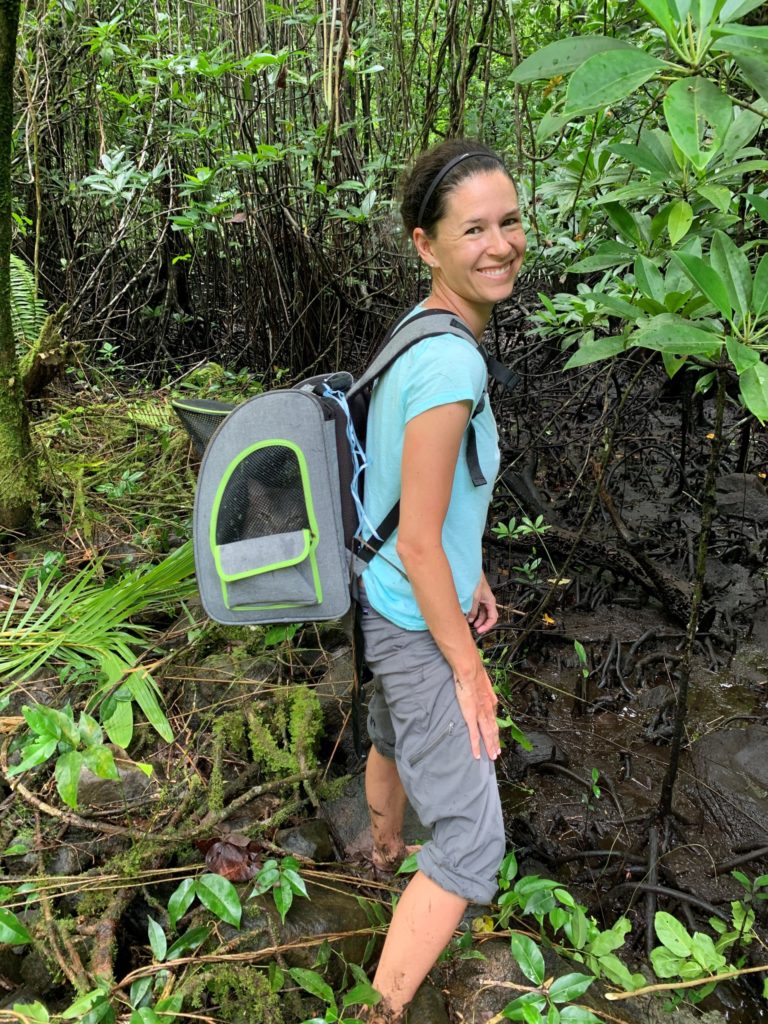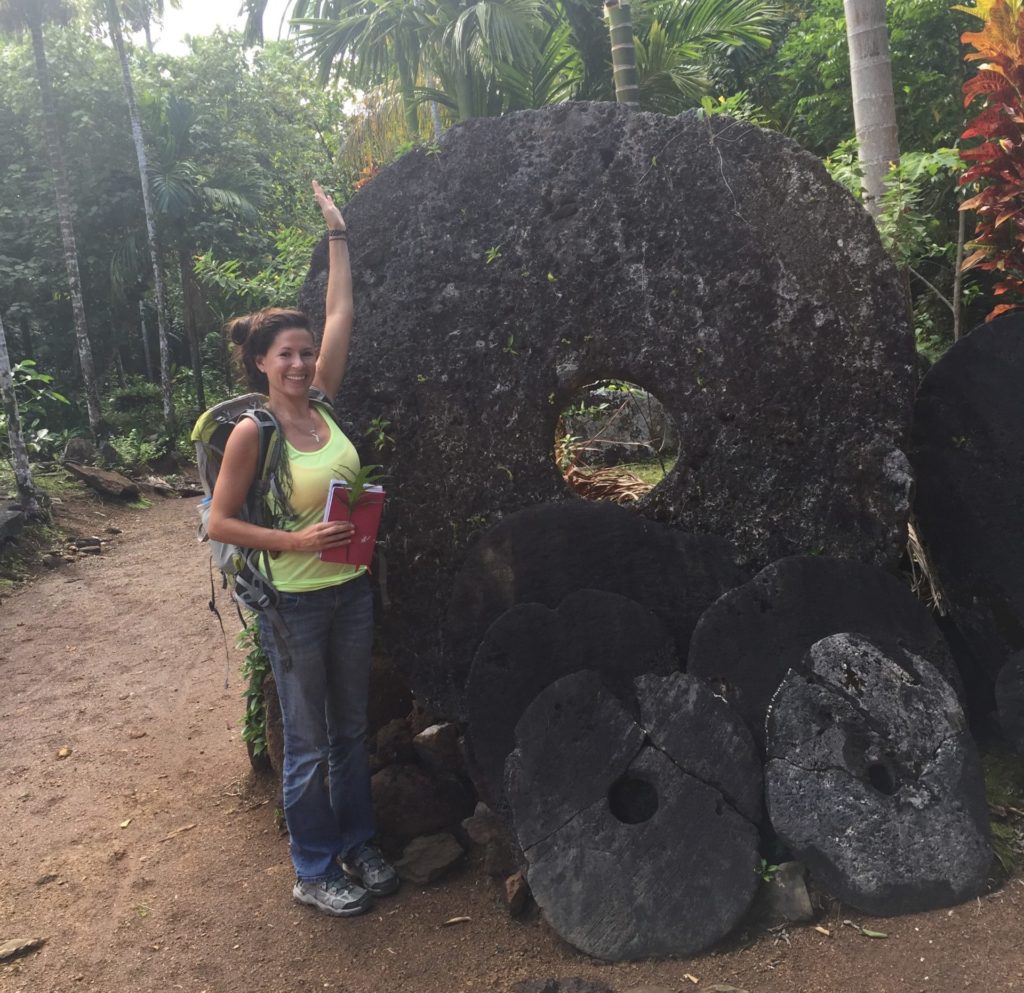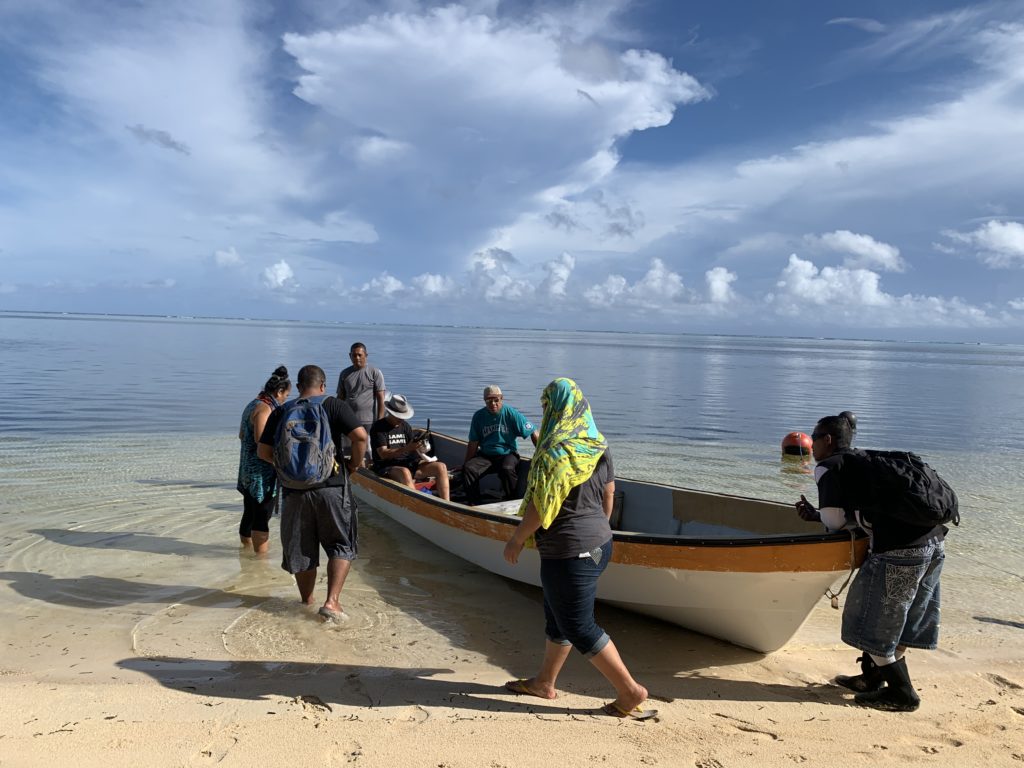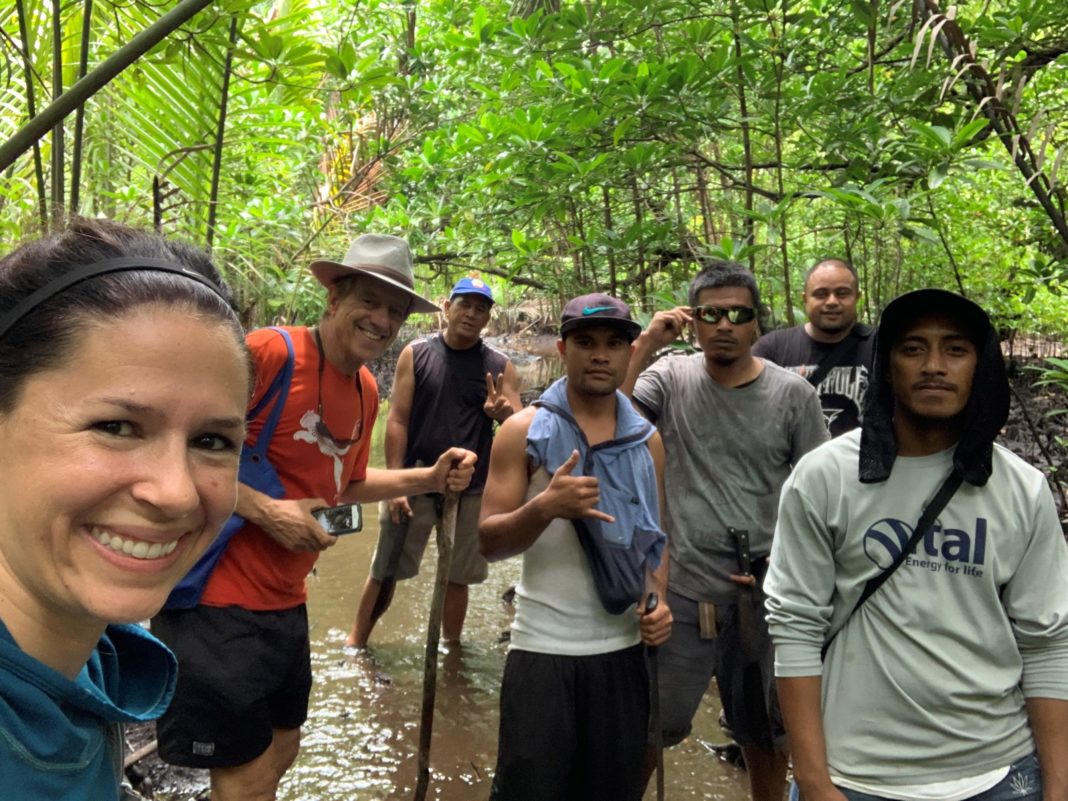At 7 years old, Ashley Meredith set out to learn Spanish. She reasoned that if she could communicate across cultures, she could bridge the gaps of understanding between people.
Years later at Mercer University, her thirst for travel was quenched through study abroad experiences and an interest in linguistics developed as she worked toward a bachelor’s degree in Spanish. Those experiences and passions ultimately led her to a career in anthropology, where she studies the languages, cultures and behaviors of people.
After graduating from Mercer in 2005, Meredith earned a bachelor’s degree in linguistics at the University of Hawaii at Hilo, through which she discovered she was drawn to a branch within the field called sociolinguistics. Through her studies of different languages and their structures, she saw the impact language and its features could have on individuals or a group.
“Everything from orthography to syntax, language was the center of my world, and I felt very compelled to document languages. I was very interested in how the languages were written down,” she said.
Meredith earned a Master of Arts degree in anthropology from the University of Alaska in Fairbanks, followed by a museum studies graduate certificate at the University of South Florida.

In 2016, she accepted a position as the cultural anthropologist for Yap State, the westernmost high island in the country the Federated States of Micronesia (FSM). The following year, Kosrae State — the FSM’s easternmost high island — hired her, and since 2018, she has been a national cultural anthropologist for the FSM’s Office of National Archives.
The Federated States of Micronesia, located north of Australia in the Pacific Ocean, has 607 islands. Of those, there are four main mountainous, high island states — Yap, Kosrae, Pohnpei and Chuuk — all with distinct cultures. Meredith and her husband normally reside in Kosrae, although the pandemic has challenged their re-entry into the country as it remains free of COVID-19.
Meredith’s position takes her across Micronesia, where she has contributed to a number of projects. Diplomacy is embedded in her work, as she communicates often between the United States and Micronesia. Her Spanish major has come in handy in translating documents dating back as far as the 16th century.
“A big part of my work is to build capacity and carry out ethnographic surveys,” she said. “It’s the study of culture, and typically we talk to living people about their past and a little bit of their present. We don’t just ask for people’s personal histories. We ask about their way of doing things and their role in the community, among a plethora of cultural topics.”
Anthropology looks at why people do what they do, and ethnographic surveys collect data on specific aspects of a cultural group. They often document oral histories, typically from elders. For one survey, Meredith talked to elders who travel by foot across an island to learn about what routes they use and why.
“What excites me is that we get to discover sites and stories. Every time we get to have a conversation with an elder, it’s like I’m discovering something for the first time,” Meredith said. “In our field, we don’t see culture as inherent, we see it as learned, shared, symbolic, dynamic and adapted. Culture is something we become part of through interaction with our family, our friends, our practices. The values of culture can change, even within the same country. It’s beautiful to see why we do what we do.”
The data gathered can help inform policies and regulations and lead to important developments. Ethnographic surveys in Kosrae contributed to the creation of the Mahkontowe Conservation Area, an area community elders wanted to conserve. This project originated from the Kosraean communities, and Meredith said she was humbled to be able to contribute to it.
She and her colleagues are now in the process of writing a nomination proposal to place this important Micronesian landscape on the U.S. National Register of Historic Places. Under the Compact of Free Association agreement with the United States, the FSM is eligible for this national designation.
“Ethnography is very fulfilling. It has a very real-world application. To do it well, it takes time — a resource so precious that few organizations can afford it. Larger organizations like Intel, Southwest Airlines, Apple and Microsoft employ anthropologists because they know the role of culture in user experience, for example,” she said. “These ethnographic surveys, they can be the building blocks to make well-informed plans and improve project outcomes.”

Meredith and her team are also working on nomination proposals to the United Nations Educational, Scientific and Cultural Organization (UNESCO) to designate Chuuk Lagoon in Chuuk and the Mangyol Stone Money Bank in Yap as World Heritage sites, a classification that provides legal protection to landmarks or sites that are identified as having outstanding universal value.
From the outset of Meredith’s arrival in the FSM, a goal from the country’s leadership was to have one World Heritage Site in each state, Meredith said. For Kosrae, the Mahkontowe Conservation Area and Lelu Ruins stand out for consideration.
Meredith’s background in ethnography and oral history collection led her to be invited to speak in an episode of the National Geographic TV series “Lost Cities with Albert Lin.” The episode, titled “Ghost Cities in the Pacific,” aired in October 2019 and focused on a ceremonial center on Pohnpei called Nan Madol, which became a World Heritage Site in 2016.
The complex, dating back to around 1200 A.D., is made of large stones from quarries on Pohnpei. How those rocks got there is a mystery and a source of folklore. Some people say the rocks might have been flown there by magic, Meredith said.
“I talk about the role of ethnography and oral history in documenting Nan Madol. There’s still a lot that we don’t know,” Meredith said. “I was there to emphasize the anthropological aspects to foster understanding about the connections between the islands. Similarity doesn’t mean the same. It’s possible two groups of people have never met and have similar adaptations.”
The National Geographic crew worked with the FSM Office of National Archives, Culture and Historic Preservation for about a year. It took time for the crew to apply and gain permission from the Micronesian leaders, develop the storyline and scout locations, and the filming took about three weeks, Meredith said.
“We talked with them over several months to help them get their permit and understand what they had to do. They went through the order of events to make sure it was culturally appropriate. I was really impressed with National Geographic,” she said. “It was really fun.”











